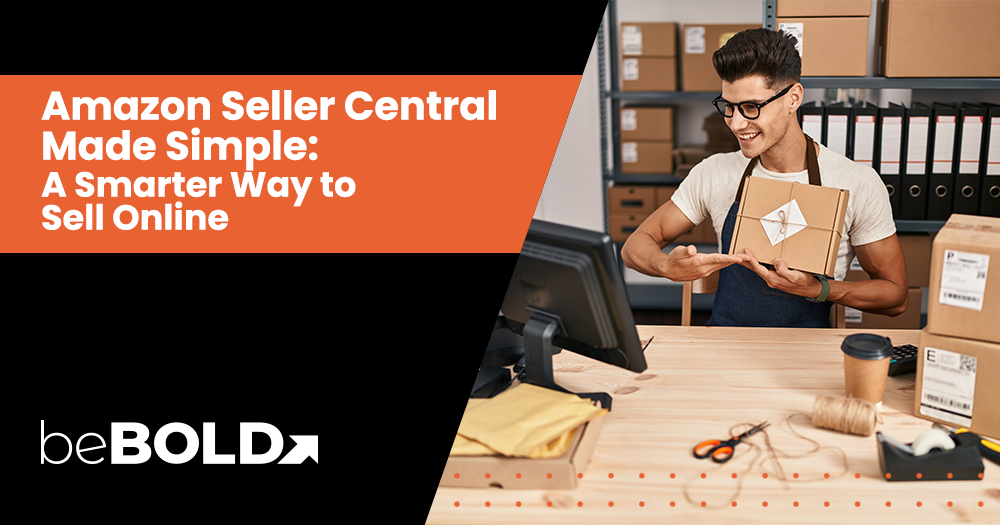Key Highlights
- Identify high-potential products by analyzing key factors like demand, keyword volume, BSR (Best Seller Rank), and customer pain points.
- Aim for products that sell at least 10 units per day, fall under a BSR of 5,000, and have consistent keyword traffic with low-to-medium competition.
- Target the $20–$50 price range and lightweight items under 2 lbs to maximize profitability while minimizing FBA and shipping fees.
- Use tools like AMZScout, Helium 10, and Amazon’s Product Opportunity Explorer to uncover low-competition niches and validate product ideas.
- Study social media trends, competitor listings, and customer reviews to identify product gaps and create better versions with improved branding, bundling, or positioning.
- Avoid seasonal fads and oversaturated niches dominated by big brands—focus on evergreen categories with recurring purchase potential.
- Always validate supplier suggestions, analyze profit margins, and ensure Amazon compliance before committing to any product.
- beBold Digital helps sellers turn data into opportunity—partner with us to uncover top-performing Amazon products and scale your brand with confidence.
Every successful online retailer knows that effective product research is the heart of selling on Amazon. These sellers don't leave their success to chance; they use data-driven insights to stay ahead in a competitive market.
Top sellers understand that predicting consumer preferences is key to thriving in today's ever-changing e-commerce landscape, and thus, implementing the strategies the right way is crucial.
This blog cuts through the noise, offering actionable tips and tools to supercharge your product research and set you up for long-term success on Amazon. So let's quickly dive into how smart product analysis can drive your e-commerce business to new heights.
What Is Amazon Product Research?
Amazon product research is the strategic process of conducting thorough market research to identify a "winning" product that could obtain significant profit when sold on Amazon, ultimately contributing to business growth. This means going beyond gut feelings or personal passions and relying on valid data to back your product selection processes.
It involves holistic market analysis, identifying existing gaps in competitors' products, understanding your potential customer base, and observing trends to find lucrative opportunities to elevate your business performance.
What Are the Factors that Influence Amazon Product Research?

Amazon product research is primarily influenced by four key factors: demand, customer behavior, competition, and profitability. Deeply examining these factors can help us understand how to do the research properly.
1. Demand
Before you invest time and money into a product, you need to be sure people actually want it. This stage is all about determining whether your product has consistent interest and movement. Without demand, even the best-looking listing won't move the needle. Here's how to know which products have a strong demand:
a. At least 10 units selling per day
A product averaging at least 10 sales daily is a strong sign of healthy demand. It shows consistent buying behavior, not just one-off trends. You want a product that sells on autopilot—not one you need to push with heavy promotions to see movement constantly.
b. Ranked under 5,000 BSR in its primary category
A Best Sellers Rank (BSR) under 5,000 typically means the product is already performing well in its niche. You're not guessing about market fit—it's already proven. This helps reduce risk and gives you a benchmark for the top listings' competitiveness and what you'll need to beat them.
c. Vigorous keyword activity and consistent search volume

Keywords tell you how often people actively search for this product and provide insight into the number of reviews. Steady monthly searches show that there is a constant demand and that it isn't just spiking due to a trend—it's reliable with steady demand. Use keyword research tools to spot opportunities where search volume is high, but competition isn't cutthroat. That's your opening to enter and dominate.
d. Has the potential for ongoing, repeat purchases
Recurring purchases are gold. People tend to rebuy consumables, accessories, or items for convenience or replacement. When customers come back on their own, you reduce your ad spend and boost customer lifetime value. Look for clues in reviews and buying patterns to spot repeat potential.
e. Not seasonal or trend-dependent
Trendy products can spike fast, but crash just as hard. You want something for your ecommerce business that people will buy year-round. Think kitchen gadgets, pet supplies, or organization tools—not Halloween props or fidget toys. Evergreen products stabilize your business and help you more confidently plan inventory and cash flow.
f. Customer reviews reveal pain points and gaps
Negative reviews from competitors are your blueprint for improvement. Maybe the lid doesn't fit, the product breaks easily, or the packaging sucks. Take notes. By solving those problems in your version, you'll win over frustrated customers and earn better reviews without starting from scratch.
j. Use competitor data to spot pricing patterns and stock fluctuations
Track your competitors' prices and how often they go out of stock. Price swings can signal poor inventory planning or high demand. If top sellers are constantly selling out, that's a green light—it shows unmet demand you could capture by staying in stock and offering consistent value.
2. Customer
Your customer isn't "anyone shopping on Amazon." They're specific people with specific needs. The better you understand who you're selling to, the easier it is to craft a product, listing, and brand that makes them say: "This is exactly what I was looking for." Here's what you need to know more:
a. Pinpoint what sets your product apart
You don't need to reinvent the wheel, but you do need to stand out. A better bundle, improved design, or eco-friendly twist can be all it takes. Think like your customer: What's missing in the current options? Your USP should speak directly to that gap and earn immediate attention.
3. Competition
You don't need a niche with zero competition. You need one where you can compete confidently. This means checking who else is selling, how well they're doing, and whether you can bring something more substantial.
a. Avoid easy-entry products that everyone can copy
Expect copycats if a product is too easy to source and requires zero differentiation. When everyone's selling the same garlic press, prices tank fast. Choose something that requires better branding, slight customization, or niche knowledge. Barriers to entry protect your margins and keep your listing from getting buried.
b. Stay away from categories dominated by major brands
If the top listings are all owned by household names, you're not competing—you're surviving. Big brands have loyal customers, deep pockets, and brand trust. Instead, find niches where customers prioritize value, innovation, or design—these are areas where smaller sellers can break in and thrive with the right strategy.
c. Evaluate how crowded the niche really is
It's not just about how many sellers exist—it's about how many are winning. Use tools to analyze their reviews, price points, and ad presence. If only a few dominate while the rest struggle, that tells you the niche has room—if you come in with something better.
4. Profitability
Even with strong demand and low competition, if the math doesn't work—you're out. Profitability means ensuring your margins hold up after fees, shipping, and ads. Use a profit calculator to analyze your costs and maximize profits. Remember: it's not about making sales; it's about making smart sales.
a. Target the $20–$50 range for optimal profit and buyer comfort
This pricing range is the sweet spot. It's high enough for you to maintain decent margins after fees and shipping, but not so expensive that customers hesitate. It also works great for impulse purchases. Products in this zone tend to move faster, with less friction and better conversion rates.
b. Stick to lightweight products for cheaper shipping
Lightweight items—ideally under 2 lbs—save you on FBA fees, inbound shipping, and even international freight. Plus, customers are less likely to receive damaged goods. Lower shipping costs mean more profit per unit, fewer returns, and more room for customer service flexibility when running promotions or adjusting to market changes.
c. Make sure you're clearing 25%–35% profit after all expenses
Selling a product isn't enough—you must ensure it's profitable. After Amazon fees, PPC spend, shipping, and cost of goods, your goal is at least 25%–35% profit. That gives you breathing room for promotions and unexpected costs without eating into your core revenue.
d. Use a checklist before you commit to a product
Even if everything looks good on paper, go through a final checklist: demand, keyword volume, profit margins, supplier quality, and competitive landscape. This final pass helps catch red flags you may have missed. Don't rely on gut feeling—rely on data, research, and some seller instinct.
Effective Strategies to Spot Top Products on Amazon
Identifying Amazon's top-selling products requires a strategic approach, utilizing multiple resources including AI product insights to make data-backed decisions. Here's a streamlined process to help you discover profitable products and stay ahead in the competitive marketplace.
1. Using Amazon Marketplace
To succeed on Amazon, it's crucial to understand how to navigate the platform effectively. These strategies will help you find high-potential products:
- Leverage the Best Sellers page Rank (BSR): The Best Sellers page Rank (BSR) is a powerful tool for evaluating a product's sales performance. A low BSR indicates high sales in a category, helping you identify products with strong demand. Keep an eye on products with a low BSR for an idea of what's trending in the marketplace.
- Pay Attention to Reviews: Customer feedback is a goldmine for understanding what works and what doesn't. Pay close attention to product reviews—especially the common pain points or features that customers rave about. These insights can help you tweak your product offering to meet customer expectations.
- Monitor Competitor Pricing and Inventory: Price tracking isn't just about matching your competition. By monitoring pricing trends and inventory levels, you can get a feel for demand. If a competitor consistently runs low on stock, that might indicate a high-demand product with profit potential.
2. Exploring Social Media Trends
Social media platforms have become a powerful tool for discovering trending products. By keeping an eye on platforms like Instagram, TikTok, and even LinkedIn, you can spot emerging consumer trends before they hit the mainstream:
- Spot Popular Products: Amazon influencers often play a pivotal role in product trends. Watch for influencer posts or viral content on platforms like Instagram and TikTok to learn about products that are gaining traction.
- Study Industry Trends on Apps: Apps like Clubhouse or industry-specific forums can provide real-time insights into what people are talking about and what they want. These platforms can be a valuable source for spotting gaps in the market.
- Hashtags Are Key: Use hashtags related to your niche or industry to uncover posts about trending products. Hashtags are a great way to tap into user-generated content and gather organic insights into what consumers are currently loving.
3. Ask Your Current Supplier
For sellers already established on Amazon, suppliers can offer insider knowledge about which products perform well in the e-commerce business, primarily through a well-connected service provider network. You should do this because:
- Suppliers have firsthand access to sales data and often know which items are moving fastest.
- By nurturing a good relationship with your suppliers, you can stay ahead of trends and secure better pricing for bulk orders of trending products.
- However, remember that while supplier insights are valuable, validating this information through broader market and competition research is essential.
- This helps ensure that you're making well-informed decisions and not just following the latest trends blindly.
4. Visit Retail Stores
Sometimes, the best product ideas come from stepping outside the digital world. Visiting local retail stores can:
- Spark creativity by exposing you to products that aren't readily available online.
- Look for unique, locally popular items or products that are exclusive to physical stores. These could be untapped opportunities for online sales.
- Retail stores also allow you to inspect product quality firsthand, something you can't always do when researching solely online.
5. Analyzing Customer Reviews and Amazon Search Bar Data
Customer reviews on Amazon are a direct line to how your target audience feels about products. By analyzing product reviews, you can:
- Gain insights into product performance, customer pain points, and opportunities for improvement.
- Similarly, the Amazon search bar is another powerful tool. The search suggestions that pop up are often based on what consumers are actively searching for, giving you a clear idea of trending products and emerging demand in specific categories.
- A SellerApp Chrome Extension can also enhance your review analysis by filtering customer feedback more effectively.
- Overall, combining customer feedback and search data can build a robust picture of what the market wants and tailor your product offerings accordingly.
6. Look at eBay's Trending List

eBay's trending list offers valuable insights into consumers' interests. Products that consistently appear on this list often gain momentum, which could translate into profitable opportunities for Amazon sellers. By analyzing these trends, you can:
- Spot categories or specific products that are beginning to gain traction, allowing you to capitalize on them before they become oversaturated.
- eBay's trending products also complement your Amazon research by showing you what's hot on other platforms.
7. Employing Product Research Tools

Product research tools, such as AMZScout PRO, are a must-have for anyone serious about finding profitable products on Amazon. These tools can:
- Access vast product databases, analyze market trends, and evaluate competition levels, making your research process more efficient.
- Tools like AMZScout, a popular choice among sellers, Jungle Scout, or Helium 10, provide in-depth product insights, sales estimates, and trend analysis.
- AI-powered tools enhance decision-making by offering behavioral insights. These insights help you understand what customers are likely to purchase next and can guide you in choosing the right product to sell.
8. Use the Amazon Product Opportunity Explorer

Lastly, know that if you're already selling on Amazon, the Product Opportunity Explorer in Seller Central is an invaluable tool for uncovering new product opportunities.
To get started, log into your Seller Central account, go to Growth, and select Product Opportunity Explorer.
a. How to Use the Tool
Once you're in, you can search for a broad keyword related to your product idea or explore niches by browsing categories. You can even check out example niche suggestions based on the products you're already offering.
b. Discover Product Insights
The tool presents a detailed list of niches along with key metrics like top search terms, search volume, units sold, average prices, and price ranges. You can use these metrics to filter out products with insufficient demand or poor reviews, ensuring you're not wasting time on low-quality items.
c. Leverage Customer Feedback
One of the coolest features is the Customer Review Insights section. It lets you examine both positive and negative reviews for a given product or niche, helping you pinpoint areas for improvement and find gaps you can fill with a new or better product.
Using the Product Opportunity Explorer, you can fine-tune your product research with data-backed insights, significantly lowering the risk of failure.
Step-by-Step Guide to Amazon Product Research

Navigating the vast Amazon marketplace requires more than picking a product and hoping for the best. This guide will walk you through generating solid product ideas, assessing niche potential, and ensuring your chosen product is viable and compliant with Amazon's rules.
1. Generate Product Ideas

Don't start with what you want to sell—start with what people are buying.
You must:
- Use tools like Amazon's Best Sellers, Movers & Shakers, and keyword research platforms to spot trending or consistently in-demand items.
- Pay attention to problem-solving products, underwhelming listings with potential for better branding, and gaps in bundles or accessories.
- Also, consider everyday frustrations in your own life—some of the best ideas come from solving real-world problems.
Remember, your goal isn't to find a "cool" type of product; it's to find a product that people search for, buy regularly, and will leave reviews on.
2. Assess the Niche on Amazon
.png?width=602&height=250&name=amazon%20product%20research%2010%20(2).png)
Once you have a few ideas, it's time to evaluate the playing field.
Here, you must:
- Search the product keyword on Amazon and study the top listings. Are the top sellers private label brands or big players? What do their reviews say? Is the pricing competitive or a race to the bottom?
- Look for signs of opportunity: low review counts, poor images, weak branding, or unanswered customer questions.
- If every top listing looks polished and has thousands of reviews, that niche might be tough to break into.
- But if you find gaps that increase your chances of success, go deeper.
Note that you're not looking for a perfect niche. You're looking for a niche with enough flaws to win.
3. Analyze Product Viability within the Niche
Not every product with demand makes sense for your business.
So, run the numbers:
- Factor in your landed cost (product + shipping), Amazon FBA fees, and advertising costs. Is there a healthy margin left—ideally 25%–35%? Consider seasonality, dimensions, weight, and durability.
- A fragile item with high returns or bad reviews can quickly destroy your profit.
- Also, look at the product's longevity: is it a one-time buy, or does it open the door for upsells or repeat purchases?
At the end, long-term viability matters more than short-term hype.
4. Ensure Compliance with Amazon Rules
The "best" niches on Amazon often vary based on changing trends, seasons, and evolving consumer preferences.
However, categories like electronics, home and kitchen, personal care, books, and types of products such as fitness equipment often have high demand and offer substantial profits compared to similar products for the best results.
Unlock Amazon Success with Our Expert Product Research Team
At beBOLD Digital, our team is dedicated to helping you find the most profitable products to sell on Amazon. With a deep understanding of market trends and extensive experience in product research, we ensure that every decision is backed by solid data. We don’t just research products; we uncover opportunities that position your business for long-term success.
By partnering with us, you’re tapping into a wealth of knowledge and expertise. Our skilled team specializes in competitor analysis, niche identification, and identifying products with high potential. We make sure you’re always one step ahead, so you can focus on scaling your business while we handle the research for you. Quickly reach out to us today to let us help in your Amazon selling journey!
Conclusion
Finding top products on Amazon is more than just luck—it's about smart research and understanding the key factors that make a product succeed, like customer behavior, demand, competition, and profitability within your business model.
While you can never fully predict which product will take off, using the right strategies and tools, including reviewing Amazon's best seller lists in the Amazon store, can definitely give you a leg up.
Today, the best-sellers are the ones who stay flexible, keep learning, and adjust their approach as trends shift. It's that adaptability that often leads to lasting success on Amazon.
Frequently Asked Questions
What does Amazon product research do?
Amazon product research is a strategic process that helps identify potential "winning" products for sale on Amazon. It allows sellers to assess market demand, consumer behavior, competition, and profitability to prevent lousy investment decisions and ensure business growth.
What are the best niches to sell on Amazon?
The "best" niches on Amazon often vary based on changing trends, seasons, and consumer preferences. However, categories like electronics, home and kitchen, personal care, books, and fitness equipment often have high demand and offer substantial profits.
Are there any free product research tools available?
Yes, many free tools help streamline your product research process. These include Google Trends for checking product seasonality, AMZScout Product Database for exploring Amazon's product categories and assortment, and Helium 10 for checking keywords and tracking competitors.
How much can I expect to earn from selling top products on Amazon?
The amount you can earn from selling top products on Amazon varies, but successful sellers often make anywhere from a few hundred to tens of thousands per month. Key factors include product demand, pricing strategy, and profit margins. With the right approach, you can scale your earnings significantly over time.
How do I analyze the competition within a niche?
Analyzing competition within an Amazon product niche involves studying other sellers, their pricing, customer reviews and ratings, quality of the product listing, and promotional efforts. Using product research tools can provide valuable insights into competition levels, making such analysis more efficient and accurate.
What are the most common mistakes to avoid in Amazon product research?
Common mistakes when performing Amazon product research include overlooking seasonal trends, not factoring in FBA and other costs, not considering the competition level adequately, not verifying product compliance with Amazon's rules, and not validating the findings from external research against Amazon's own data.
Start Your Product Research Today – Let our experts guide you to the best opportunities on Amazon. Get in touch now!











Comments